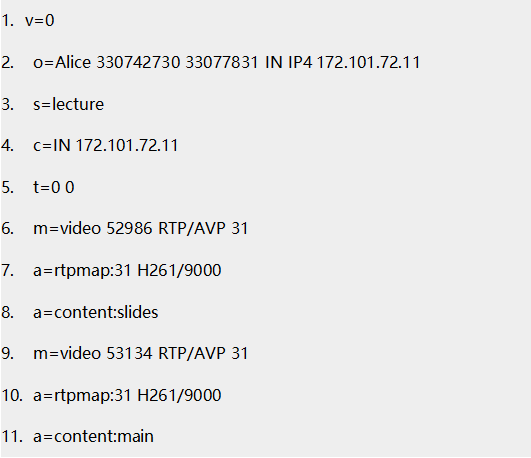SIP protocol realizes dual stream
Dual stream is a concept in video conferencing, referring to the capability of a client to simultaneously display two video streams. One is the **main video stream** (main), and the other is typically for **content sharing** (slides), also called **share content**. The "content" usually includes screen sharing, PowerPoint presentations, documents, or similar materials.
In SIP protocol implementations of dual streams, the SDP (Session Description Protocol) includes two video media tags: one labeled **main** (representing the primary video stream) and another labeled **slides** (representing the secondary stream). The SDP format distinguishes the two streams using the **`a=content`** attribute, with each stream assigned a separate RTP port.

SIP-based dual streaming requires coordination between the **SIP protocol** and the **BFCP (Binary Floor Control Protocol)** for control implementation. BFCP handles **floor requests** for permission management. For example, when a client wants to share content (e.g., documents), it initiates a BFCP floor request to other clients. Once the request is negotiated and approved, the client triggers the secondary video stream by sending a SIP **re-INVITE** message containing the updated SDP information for the second stream.


 scan
scan
 15818654305
15818654305
 Room 436, Building 51, Qiongyu Road, Yuehai Street, Nanshan District, Shenzhen City, Guangdong Province
Room 436, Building 51, Qiongyu Road, Yuehai Street, Nanshan District, Shenzhen City, Guangdong Province


